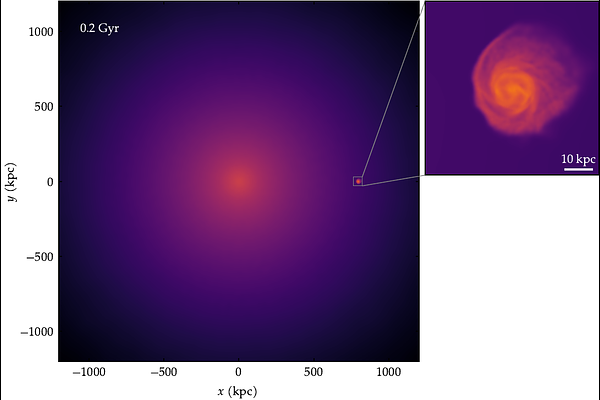Quantifying the unwinding due to ram pressure stripping in simulated galaxies

Quantifying the unwinding due to ram pressure stripping in simulated galaxies
Rubens E. G. Machado, Caroline F. O. Grinberg, Elvis A. Mello-Terencio
AbstractGalaxies moving through the gas of the intracluster medium (ICM) experience ram pressure stripping, which can leave behind a gas tail. When a disk galaxy receives the wind edge-on, however, the characteristic signature is not a typical jellyfish tail, but rather an unwinding of the spiral arms. We aim to quantify such asymmetries both in the gas and in the stellar component of a simulated galaxy. To this end, we simulate a gas-rich star-forming spiral galaxy moving through a self-consistent ICM gas. The amplitude and location of the asymmetries were measured via Fourier decomposition. We found that the asymmetry is much more evident in the gas component, but it is also measurable in the stars. The amplitude tends to increase with time and the asymmetry radius migrates inwards. We found that, when considering the gas, the spiral arms extend much further and are more unwound than the corresponding stellar arms. Characterizing the unwinding via simulations should help inform the observational criteria used to classify ram pressure stripped galaxies, as opposed to asymmetries induced by other mechanisms.